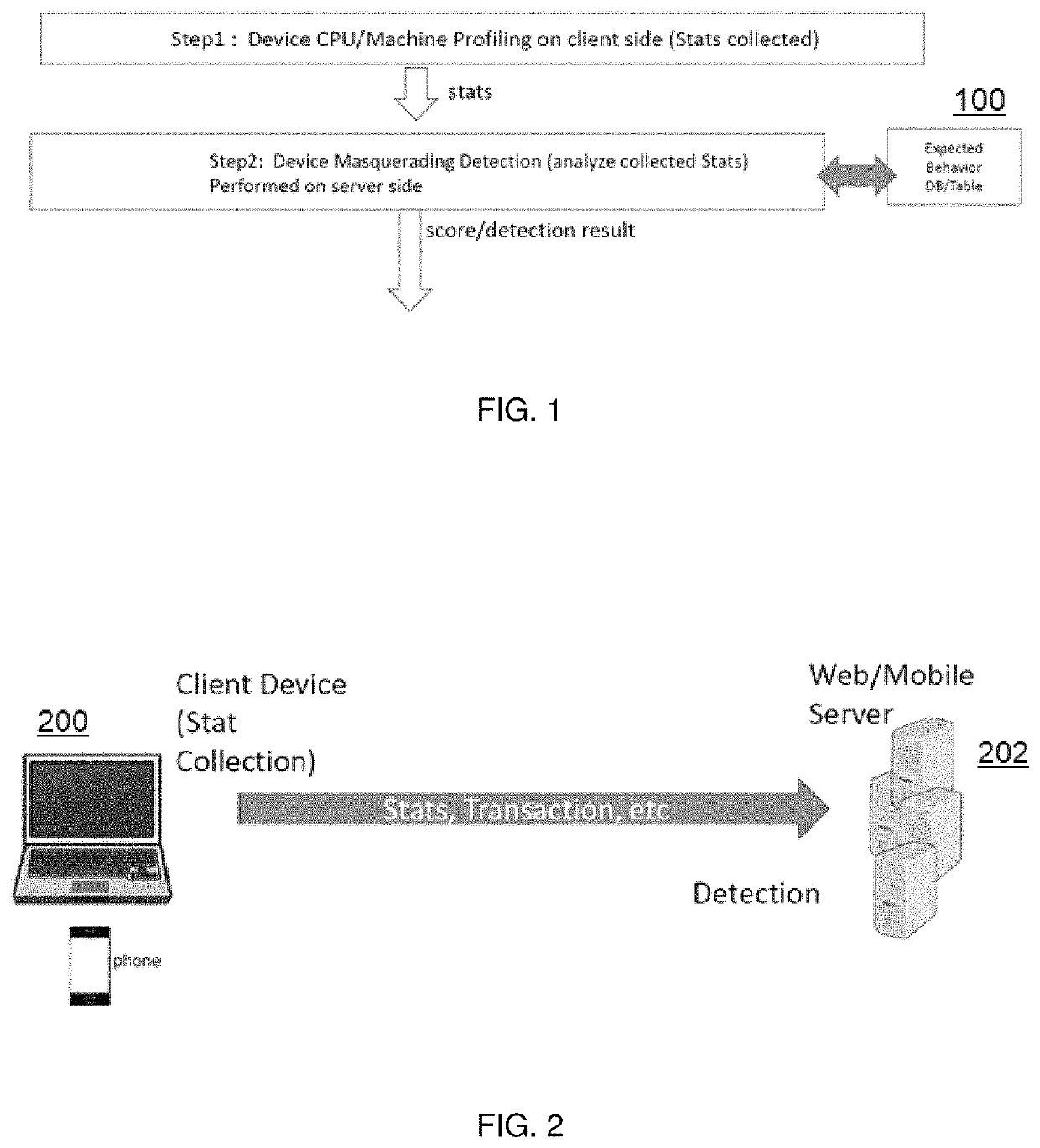Detecting device masquerading in application programming interface (API) transactions
a technology of api and detecting device, applied in the direction of transmission, electrical equipment, etc., can solve problems such as fraudsters accessing, and achieve the effect of preventing further damage or reducing damag
- Summary
- Abstract
- Description
- Claims
- Application Information
AI Technical Summary
Benefits of technology
Problems solved by technology
Method used
Image
Examples
Embodiment Construction
[0012]As will be seen, the server participating in the API transaction detects a device masquerading its device type by exploiting the notion that client-side devices have different performance characteristics based on their underlying hardware and supporting software. For instance, a high-end computing device can run programs much faster than, say, a mobile device with less computing resources (e.g., a mobile phone, tablet, wearable, an Internet of Things (IOT) device, etc.). The technique herein thus exploits this notion by causing the requesting client (namely, the device participating in the API transaction and representing itself with a device type) to collect device performance statistics, and then to send those performance statistics to the server. Preferably, this performance data collection and transmission is done on the client in an automated manner as part of the client-server API transaction (e.g., using Javascript, a mobile SDK, or the like) such that the client provid...
PUM
 Login to View More
Login to View More Abstract
Description
Claims
Application Information
 Login to View More
Login to View More - R&D
- Intellectual Property
- Life Sciences
- Materials
- Tech Scout
- Unparalleled Data Quality
- Higher Quality Content
- 60% Fewer Hallucinations
Browse by: Latest US Patents, China's latest patents, Technical Efficacy Thesaurus, Application Domain, Technology Topic, Popular Technical Reports.
© 2025 PatSnap. All rights reserved.Legal|Privacy policy|Modern Slavery Act Transparency Statement|Sitemap|About US| Contact US: help@patsnap.com



